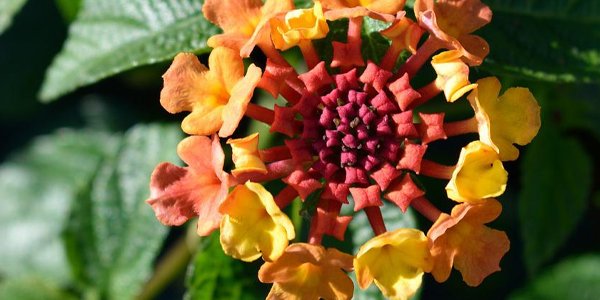Lantana price

Where to buy and sell Lantana, lowest (cheapest) and highest price.
check offers buy sell LantanaToday price for LantanaLantana wholesale prices 2022
The Current commodity price of Lantana per kg, pound in the world in the global markets
lantana
Price range: 1 - 1 EUR / 1 kg | Market: Mercados de Abastecimientos de Barcelona SA | Date: 2022-10-09
lantana
Price range: 1 - 1 EUR / 1 kg | Market: Mercados de Abastecimientos de Barcelona SA | Date: 2022-07-10
lantana
Price range: 1 - 1 EUR / 1 kg | Market: Mercados de Abastecimientos de Barcelona SA | Date: 2022-07-03
lantana
Price range: 1 - 1 EUR / 1 kg | Market: Mercados de Abastecimientos de Barcelona SA | Date: 2022-06-26
lantana
Price range: 1 - 1 EUR / 1 kg | Market: Mercados de Abastecimientos de Barcelona SA | Date: 2022-06-19
lantana
Price range: 1 - 1 EUR / 1 kg | Market: Mercados de Abastecimientos de Barcelona SA | Date: 2022-06-05
lantana
Price range: 1 - 1 EUR / 1 kg | Market: Mercados de Abastecimientos de Barcelona SA | Date: 2022-05-22
lantana
Price range: 1 - 1 EUR / 1 kg | Market: Mercados de Abastecimientos de Barcelona SA | Date: 2022-05-15
Lantana
Lantana is a genus of flowering plants in the verbena family, Verbenaceae. They are native to tropical regions of the Americas and Africa but have been introduced to other areas, including the West Indies and Australia. The genus includes both annual and perennial herbaceous plants as well as woody shrubs. All species of Lantana are poisonous if ingested in large quantities by humans and other mammals, although the exact toxicity varies by species. Lantana plants are typically multi-branched and can grow to be several feet tall. The leaves are opposite, simple, and ovate to lanceolate in shape with serrated margins. The flowers are borne in clusters and are typically bright orange or yellow, although some species may have white or pink flowers. The fruit is a blackberry that contains numerous small seeds. Lantanas are heat-loving plants that do best in full sun and well-drained soil. They are relatively drought-tolerant once established and can tolerate light frost. Lantanas are generally pest- and disease-free, although they may be susceptible to scale, mealybugs, or aphids. Lantanas are popular garden plants and can be used in a variety of ways. They make good border plants, groundcovers, or foundation plantings. They can also be grown in containers. Lantanas are also popular as cut flowers. Lantana is a genus of about 150 species of perennial flowering plants in the verbena family, Verbenaceae. They are native to tropical America, Africa, and Madagascar, but some have become naturalized around the world. The genus includes both herbaceous plants and shrubs growing to 0.5–2 m (1.6–6.6 ft) tall. Their common names are shrub verbenas or lantanas. The flowers are produced in clusters, with each flower having five petals fused together at the base, and come in shades of white, yellow, orange, red, pink, or purple. The flowers typically change color as they age; individual flowers can be any two of these colors. The fruit is a dry, five-lobed capsule containing numerous small seeds. Lantana plants are considered weedy or invasive in many areas outside their native range, including much of Asia and Australia, as well as the southern and central United States. They are often planted as ornamental plants but can become a nuisance if they spread unchecked. The plant produces large quantities of nectar, which attracts bees and other pollinators. Some beekeepers use lantanas to produce lemongrass-scented honey.Global lantana production
Lantana is a genus of about 150 species of flowering plants in the verbena family, Verbenaceae. They are native to tropical America, Africa, and Madagascar, but some have become naturalized around the world. The genus includes both herbaceous and woody plants, as well as annual and perennial flowering types. The lantana flower is a popular choice for use in gardens and as an ornamental plant. Lantana is typically grown in USDA hardiness zones 9-11, but some varieties can tolerate colder temperatures down to zone 6. They prefer full sun and well-drained soil, but will tolerate partial shade and clay soils. Lantanas are drought-tolerant and relatively low-maintenance, making them a good choice for xeriscaping or other water-wise landscaping. The lantana plant is native to tropical and subtropical regions of the world, and it is now grown in many places around the globe. The plant is prized for its beautiful flowers, which come in a variety of colors including pink, orange, yellow, red, purple, and white. Lantana flowers are often used in bouquets and floral arrangements. The vast majority of lantana production takes place in Brazil, which is estimated to produce more than 80% of the world's supply of flowers. Other major producers include Mexico, Colombia, Ecuador, and Peru. Lantana grows best in warm climates with plenty of sunshine and well-drained soil.Download our new
Husfarm App
Stay up to date with the current prieces of agricultural products all over the world.
Do you want to sell agricultural products?
Are you an Agricultural processor looking for high-quality products to buy?
Post an ad for FREE!
